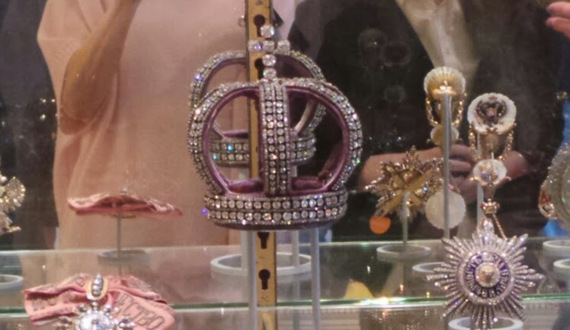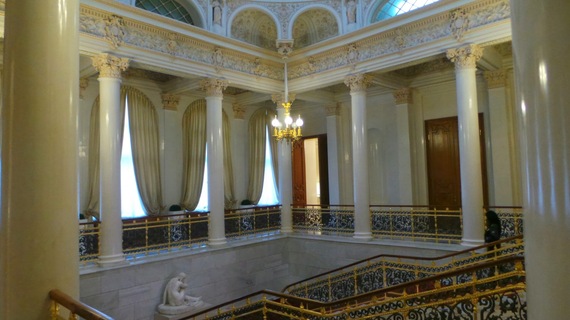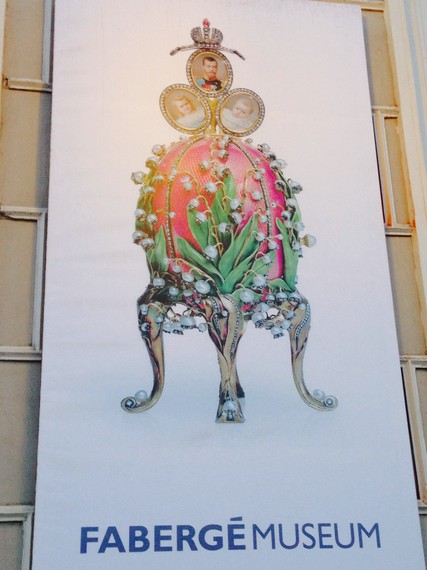Contemporary art is the hottest investment today. Records are broken in almost every sale. Discussion of "bubbles" is included in every article but until/if it bursts all are waiting for the bloom on the tulip to fade.
With neither funds nor desire to invest in the contemporary art market (apologies to my daughter who works with a leading contemporary art gallery in London), another longer-term trend in investments interests me. The jewels of the one percent through history. I look at history not of investment bubbles, but of the flow of wealth through the jewelry.
In 1995, I traveled to St. Petersburg, Russia, my first visit since the fall of the Soviet Union. There was a fire sale going on as the country struggled with an economic earthquake. Not quite the magnitude of the Boshevik sale of the Romanov treasures, but sadly important and significant as well. I visited the small antique shop in the historic Astoria Hotel and asked if they had any Imperial, pre-Soviet treasures. The owner showed me two small Faberge eggs. Not the imperial ones, but the small charms that young aristocrats wore on necklaces and bracelets. They were yellow and green with the never copied Faberge guilloche enameling. Hallmarks were clear. But the hurdle for me, a young working mother was the $500 price tag for both. I passed on them and have regretted it ever since. Thus was born my fascination with jewelry as history, jewels with a provenance that tells a story.
I find that wherever I travel, it is the jewels and gems that tell me a much deeper story of power, wealth, revolution and loss and maybe circling back again...
The nuptial crown of Empress Alexandra, Hillwood Museum, Washington, D.C.
Last summer, I was visiting a private palazzo in Sicily. (I cannot name it or the town for security reasons.) In a home with exquisite decorative arts and art, I saw a large portrait of the owner's mother from the 1920s. In it she was wearing the longest, largest strand of pearls that I have ever seen. I asked the owner about these pearls. He told me that they were the Yusupov pearls. This one name and family brought to mind a past century of wealth, revolution and struggles to survive. Felix Yusupov, son of the wealthiest family in Czarist Russia, achieved historic notoriety as the murderer of Rasputin. He is credited as the one who tried to save the Romanovs by removing the most damaging man from their circle.
The cellar room of the Yusupov Palace, St. Petersburg where Rasputin was Murdered
He succeeded in the murder, but not in saving the monarchy. But his actions, subsequent exile and notoriety among the revolutionaries did facilitate his efforts to save many of his family jewels and collections. He fled to the west and sold what he needed to survive. Where his jewels and those of many russians can now be found tells the story of the flow of wealth and power, more than any stories of investment bubbles -- art or tulips. Research leads me to royal tiaras, Park Avenue, villas in Sicily, Silicon Valley and in the circle of history -- back to Russia.
The best book on the history of one jewel is Richard Kurin's wonderful The Hope Diamond. Richard is the Smithsonian's Undersecretary for History, Art and Culture and I was honored to travel with him several times during my tenure at the Smithsonian. It is a must read and he tells the history of the stone and the international ebb and flow of wealth through this one diamond.
Through the millennia, investing in the precious metals and jewels was seen as the way to insure lasting, transportable wealth. Dowries in the Middle East and Asia still provide the couple with these investments. Gold souks worldwide cater to this market.
But more fascinating to me is tracing the ownership of significant jewels through history. The recent article on the value of the Duchess of Cambridge's engagement ring and others has interested the general public as has the history of the ownership.
My interest goes back further. I will be in Russia two times this summer and revisiting the fabulous newly/almost open Faberge Egg museum, the Diamond Fund in Moscow, the Treasure Vaults of the Hermitage and several significant antique shops. I will also be visiting the UK and the Tower of London, Wartski Jewelry shop and some private collections throughout the UK. Any other suggestions are most welcome!
More to come as I spend this summer and fall, traveling through history via exquisite gems. A new travel niche? Is the history of the modern world now best told through Sotheby's and Christie's catalogs? Perhaps.





